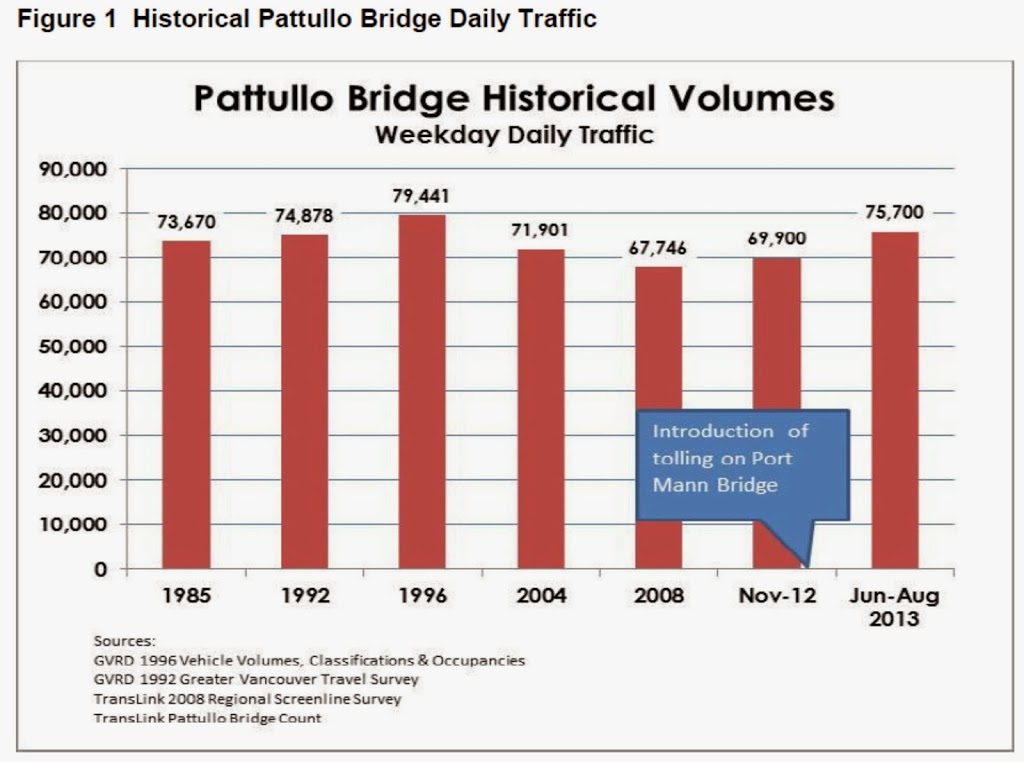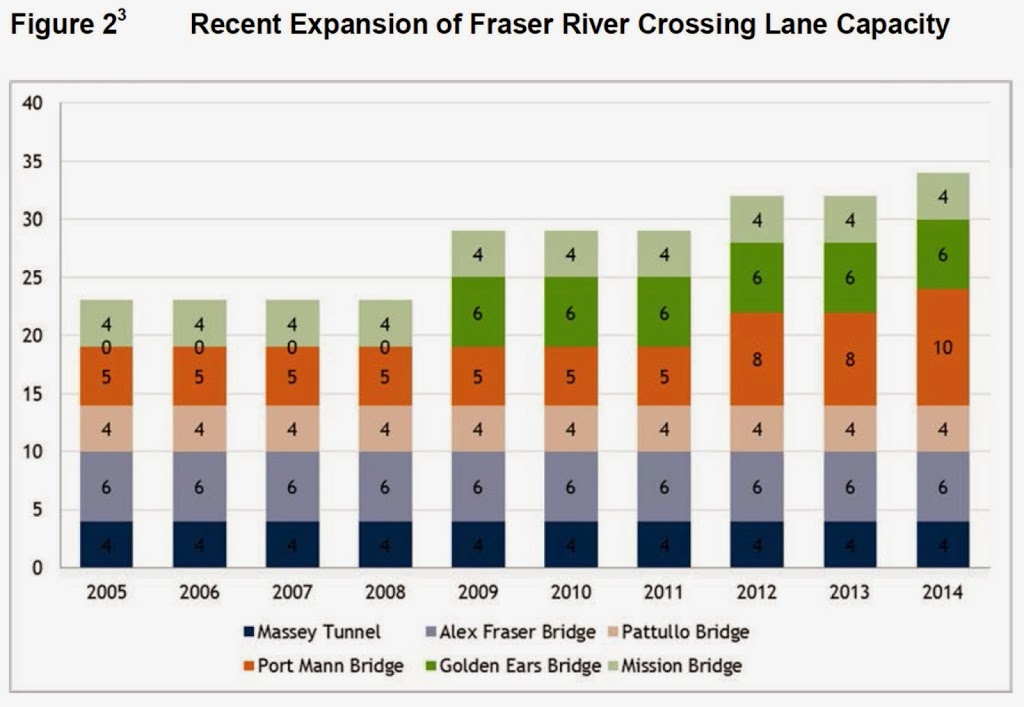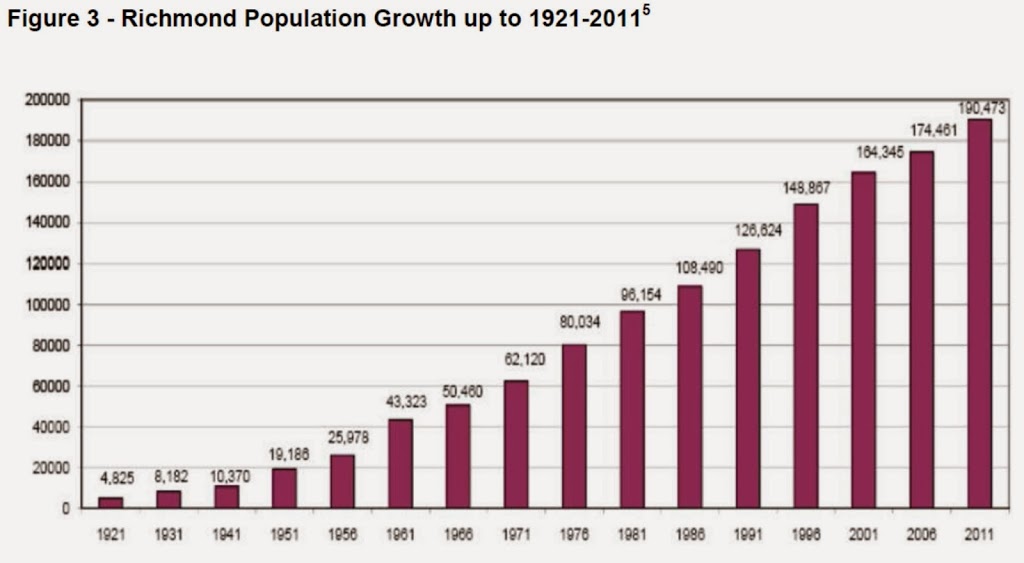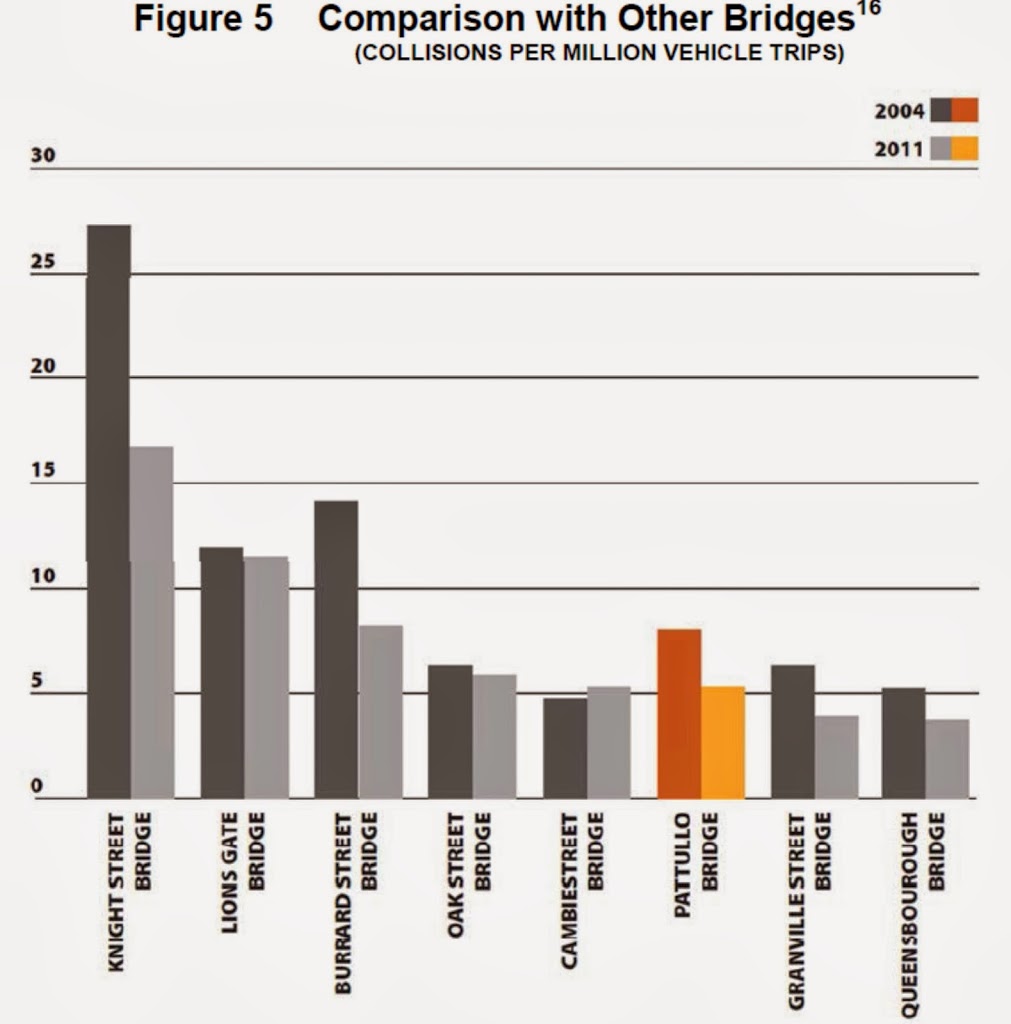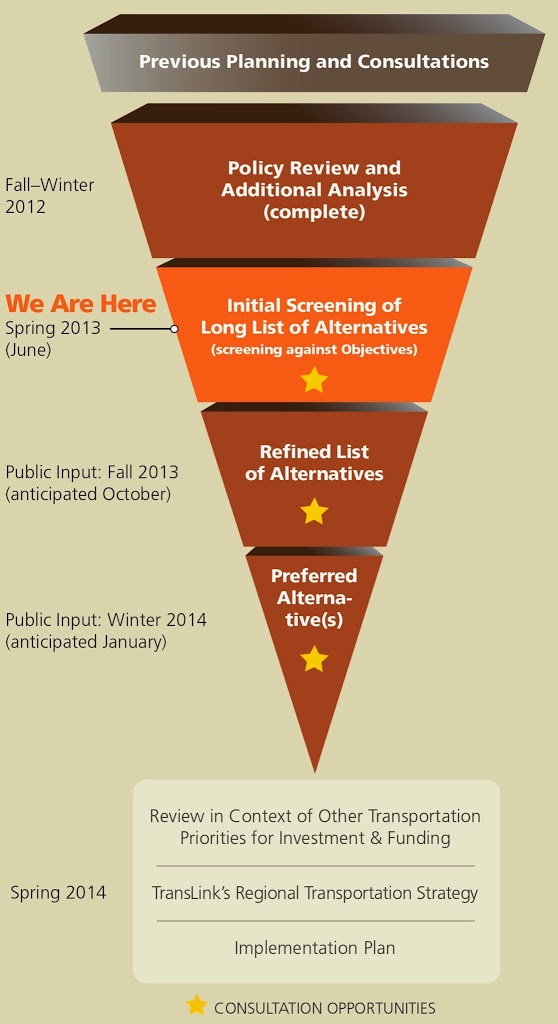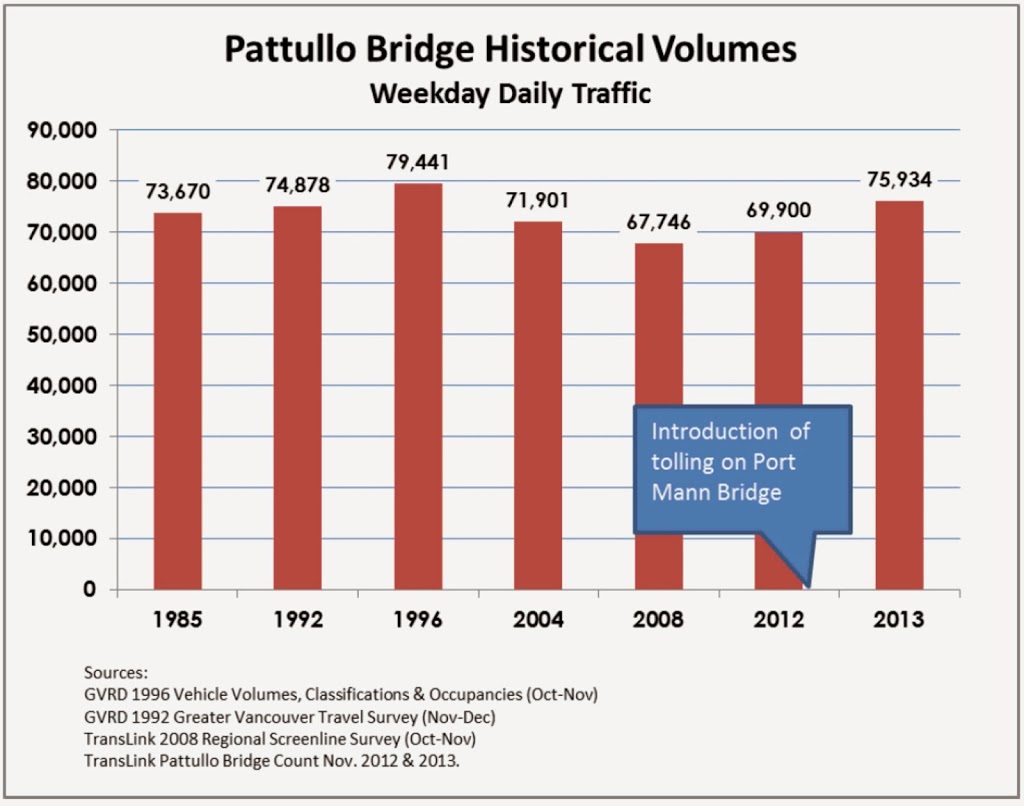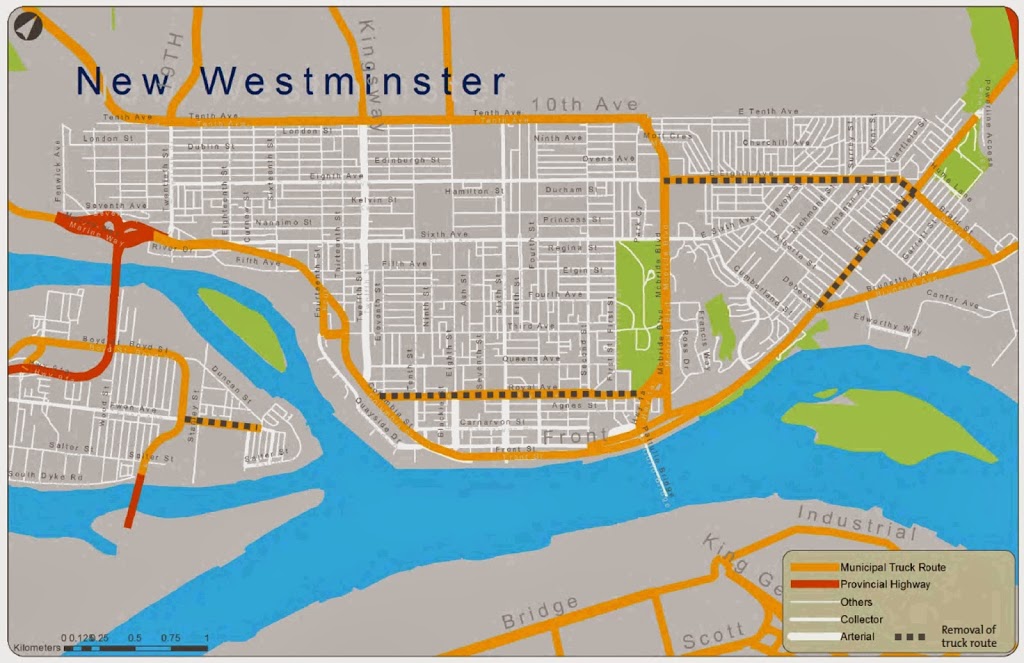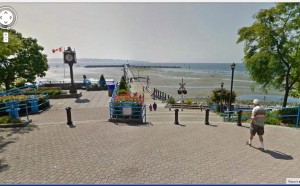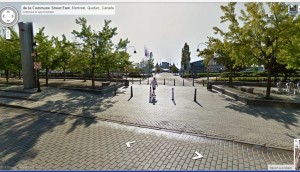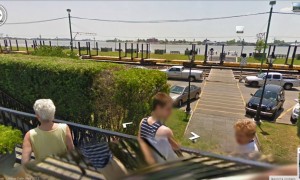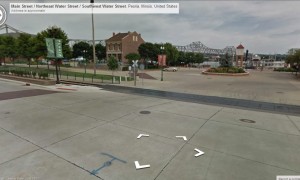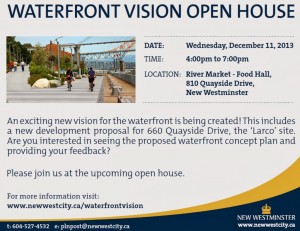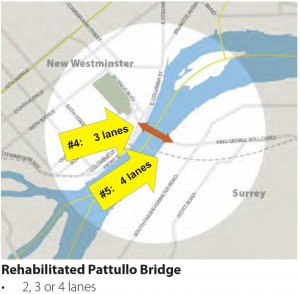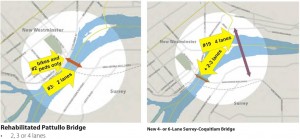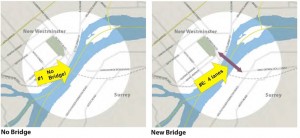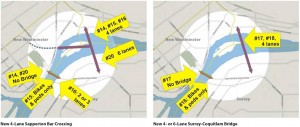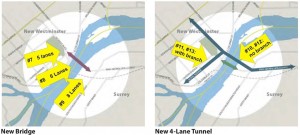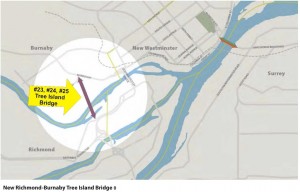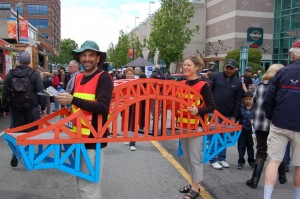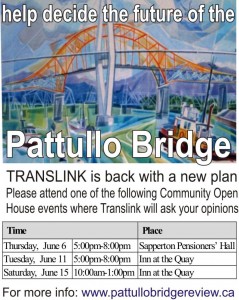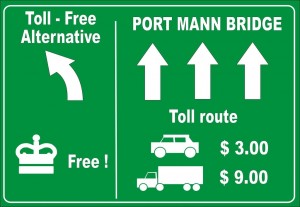Like many others, I have been watching the ongoing Pattullo Bridge roadshow with some interest. It is an interesting approach our City Council is taking on behalf of the livability of our City, and actually an example of leadership in the region
I have already written a piece about the City of New Westminster’s Reasonable Approach position paper on the Pattullo Bridge, and have done a bit of my own road show: going to various places around town asking people to send letters of support to the City. I have actually been pleasantly surprised by the reaction from residents across the City, as they seem overwhelmingly in support of limiting or reducing the traffic impact on New Westminster from any replacement or refurbishment of the Pattullo. The idea of tolling the Pattullo (or at least that of level regional tolling) seems to have the strongest support, as the data relating to increased traffic induced by the Port Mann tolls is clear to even the most pro-driving-in-traffic people (because even the most pro-driving-in-traffic people seem to be against other people driving in their neighbourhoods mucking up the traffic…. but I digress) .
However, some people are wondering why our city Councillors are travelling to other Cities to make the case. I will argue that the unfortunate quote of Councillor Puchmayr in the Record – “It’s a move of desperation” – both mischaracterizes what is happening, and makes the case for the real reason the City is expending this much energy. Even perennially-daft Rick Cluff understands, with the City’s Master Transportation Plan nearing completion, the Pattullo Bridge is the #1 transportation issue in New Westminster right now. It is important that we get it right.
The fate of the Pattullo Bridge will not be decided by New Westminster, it will be decided by TransLink in consultation with New Westminster, Surrey, and other stakeholders. It is very likely (although this is only speculation at this time) that the Pattullo Bridge replacement/refurbishment will be part of the package of projects that will be included in whatever major projects master plan the Mayors Council puts together for the TransLink Referendum. With New Westminster being a small fish in that relatively large pond, it is critically important that our small voice be heard, and our rationale explained clearly, to the entire stakeholder group in the regional transportation mix.
This is not the desperate act of a Council that does not have facts on its side. The Reasonable Approach document outlines how expanded capacity at the Pattullo does not address the problem set identified by TransLink, does not meet the objectives set out by TransLink for addressing the Pattullo Bridge, and is in opposition to every transportation and land use plan approved by New Westminster, Surrey, TransLink and Metro Vancouver over the last 20 years. It also details, with supporting data, the negative impact that making the Pattullo the “toll free alternative” has had on the livability of New Westminster and Surrey. It is a well-argued case, based on regional priorities and objectives.
The problem is, that paragraph I just wrote will never make it into Rick Cluff’s brain. It will never make it into the Metro Newspaper, or into the editorial pages of the Vancouver Province or the GlobalBC Newz. If the City of New Westminster wants the decision makers across the region to understand what the position paper actually says, they will not be able to rely on the media to deliver that information. They need to get the correct information into the hands of those Councils and Mayors who will be advising on the regional transportation plans. The media isn’t going to do that for them, not accurately, at least.
It may not be obvious to most people, but all of the Councils of the various Cities rarely get together to talk about each others’ issues. Yes, there are regional boards, organizations like the UBCM and FCM, and occasional issue-driven direct meetings, but in their day-to-day world, the 20-odd local government Councils that make up Metro Vancouver do not converse with each other, if only due to practicality of making it happen. City Councillors in Langley City have enough on their plate every week just managing the issues of their community, they cannot hope to be up-to-date on every issue in West Vancouver or Port Moody. The most likely way a Councillor in one City is made aware of issues in other Cities is through the media, or direct written correspondence sent between Councils (this correspondence, more likely than not, written by staff and responded to by staff).
New Westminster Councillors going to meet with other Councils directly in their own chambers during a public Council Meeting is unusual, but not unprecedented. More importantly, it allows New Westminster Council to communicate directly with the decision-makers in the adjacent communities without the filter of the media or staff changing (intentionally or not) the message that is being sent. As a bonus, these communications are as transparent and open as possible.
There is not better example of the perils of relying on the Media to relate the core message than this story of Burnaby Council’s reaction to the New Westminster meeting. The headline “Burnaby reluctant to support New West’s bridge proposal” would make any reasonable reader assume that Burnaby supports the opposing view (promoted mostly by the City of Surrey) that the Pattullo should be 6 lanes and untolled. However, the real story is that Burnaby felt New Westminster was being too reasonable in their approach, and should take a more extreme position of getting rid of the bridge altogether.
With this type of misunderstanding so easy to make, even between City Councils, I think it is a great idea for New Westminster Council to engage their regional partners directly. I imagine they recognize they are in for a bit of a debate at some of their stops, but that is the purpose of consultation.
Far from “Going it alone”, the City of New Westminster has taken the problem set agreed to by all parties, used TransLink’s own data, compared the various scenarios to the Regional Growth Strategy, the Regional Transportation Strategy, and the Master Transportation Plans and Official Community Plans of our neighbouring communities, and arrived at a reasonable approach that protects the livability of our community, saves the regional taxpayer money, and provides some of the public transit funding that Surrey so desperately needs, then personally delivered this analysis to all of the regional partners to discuss it and hope to seek a common understanding.
You can call it an act of desperation if you want, but I see it as an act of rational, pragmatic, and collaborative local governance.
